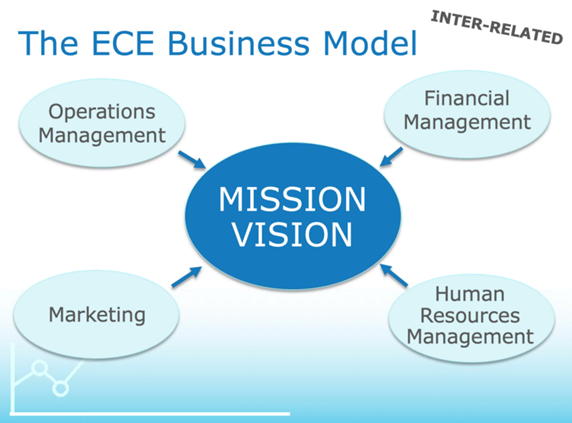
Many who work in the child care industry don’t have formal business backgrounds, which can make it difficult for them to manage the business side of their child care center. In a recent webinar, Early Childhood Investigations hosted Lauren Small, owner of Early Education Business Consultants, LLC, who gave attendees a helpful overview of some of the key business metrics and strategies centers can use to see more success.
“We have an industry of newly-minted business managers, many of whom started in education or other child-focused careers, where business skills weren’t a priority,” said Lauren. “It’s important to help child care administrators learn how to establish a strong business foundation so they can make data-driven, sound business decisions that support the success of their centers.”
Before Lauren jumped into specifics around the business and financial strategies for early childhood education (ECE), she first addressed the importance of changing the mindset as we navigate in this new environment. Key elements of what she called a “new normal mindset” include:
- Not fear-driven
- Innovative
- Responsive
- Business acumen
- Financial awareness
- Effective use of technology
- Effective decision-making process
“I want us to come back stronger than ever by reimagining our business models,” said Lauren. “COVID-19 has shown that child care is an essential service, and it’s important to have a level of business acumen that ensures we can continue to provide those essential services to the many families who need them.”
To establish a strong business foundation, Lauren said it’s important to understand what the ECE business model looks like.
“The mission and vision serve as your core, with operations management, financial management, marketing and human resources management supporting that core,” said Lauren. “If one of these areas isn’t working well, it affects all of the other areas.”

Lauren then reviewed the steps in a strategic planning process, which include:
- Establish a goal
- Gather info, research, discuss plan
- Understand financial implications of each scenario
- Make informed decisions and determine the best way forward
She provided a SMART (Specific, Measurable, Accountable, Realistic, Timeline) goal template to help in this process.

Once you’ve laid out your goals, Lauren said it’s important to learn how to conduct financial forecasting.
Key areas to look at when forecasting include:
- Projected tuition and revenue
- Projected expenses
- Payroll cost projection
- Can we break even?
- Can we make money?
- Adjustments? For example, if you received PPP funding, you need to account for when it runs out in your forecast.
“It’s all about projecting when revenue is coming in and when it’s going out so you can make informed decisions about your business,” Lauren said.
Revenue sources can include tuition, subsidy payments, CACFP reimbursements, loans, grants and donations. When looking at expenses, Lauren advised to review every expense, no matter how small, and reduce if possible.
Here’s an example of what a forecast can look like.

Lauren advised it’s a lot easier for centers to conduct forecasting if they use a child care management software (CCMS) platform. CCMS also can help create a variety of financial statements that provide important decision-making data for child care businesses.
Here are types of financial statements that child care businesses should have at their fingertips:
- Profit and Loss Statement
- Balance Sheet
- Cash flow Projection
- Accounts Receivable
- Accounts Payable
- Payroll Reports
- Critical Metrics Report
- Budgets

“I often see centers that only update and review their financial statements a few times a year, which means they’re not assessing the data enough to make the best decisions for their business,” Lauren said.
Lauren also pointed out many child care businesses that didn’t have up-to-date financial statements at the ready lost out on PPP funding because they weren’t able to act quickly enough.
In looking at key metrics, Lauren emphasized the importance of tracking revenue, accounts receivable, enrollment, labor cost and center-specific metrics (for example, employee turnover). She provided an example of a weekly status report using Procare, which allowed a child care business with five centers to automate tracking of its key metrics.

“When you leverage business software, you can automate a lot of really time-consuming and often complex tasks, including documentation, accounting, fees, parent communications, and student and employee management,” Lauren said.
To watch the full webinar and access the slides, click here.
To register for ECI’s next webinar featuring Lauren, “Rebuild Your ECE Program for the New Normal: Part 2- Marketing & Staffing,” click here.
To learn more about how you can use child care management software to simplify your center’s business processes, request a demo here.



